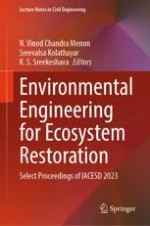This book presents select proceedings of the International Conference on Interdisciplinary Approaches in Civil Engineering for Sustainable Development (IACESD 2023) hosted under the aegis of the Group of Twenty (G20) and Civil 20 (C20) at Jyothy Institute of Technology, Bengaluru, India. The topics covered include resilient approaches towards environmental sustainability and combating climate, study of natural hazards and their impacts, resilient infrastructure and land-use planning strategies, climate adaptation and mitigation measures, green infrastructure, coastal protection, and urban heat island reduction. This book serves as a resource material for researchers and industry professionals interested in developing solutions for sustainable and resilient infrastructure that aims for communities with Net Zero Targets.
